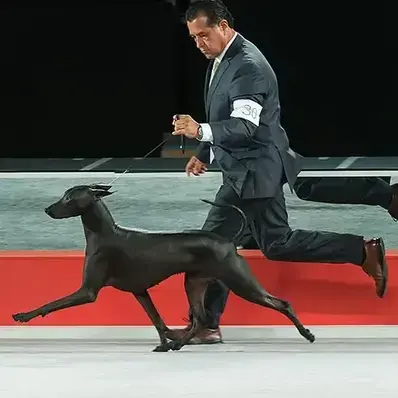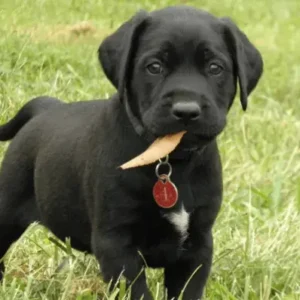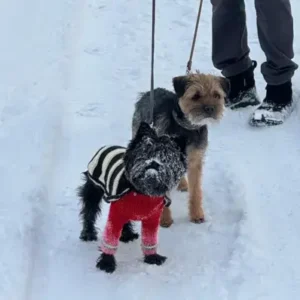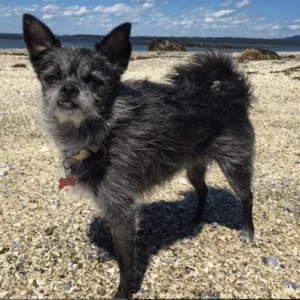Xoloitzcuintli History/Origin
The Xoloitzcuintli, unlike dogs bred through intentional crossings, is regarded as a natural breed likely originating from a spontaneous genetic mutation. Centuries of natural selection, rather than human intervention, have shaped its development.
Archaeological findings suggest that the ancestors of the Xoloitzcuintli accompanied migrating peoples across the now-submerged Bering land bridge from Asia to the New World. The breed derives its name from Xolotl, the Aztec deity of fire and guide of the dead, combined with “itzcuintli,” Aztec for dog.
According to legend, these Xolotl dogs possessed healing abilities, particularly noted for treating ailments like asthma, rheumatism, and insomnia. They were also believed to ward off evil spirits during their lives and guide souls to the afterlife, albeit often through sacrificial means. Unfortunately, they were also considered a source of food.
Despite these challenges, the Xoloitzcuintli persisted and experienced periods of popularity. Recognized by the American Kennel Club in 1887 under the name Mexican Hairless, under Non-Sporting Group the first AKC-registered Xolo was Mee Too, a dog from Mexico.
The breed briefly regained attention in 1940 when Chinito Jr. became the first and only Xolo to win an AKC championship. Artists like Diego Rivera and Frida Kahlo immortalized them in their works.
Xoloitzcuintli as Mexican Hairless – Source: AKC.org
However, the breed fell into obscurity once more and was even deregistered by the AKC in 1959. Thanks to dedicated enthusiasts, the Xoloitzcuintli was saved from extinction.
Today, it is considered a national treasure in Mexico, honored as Dog of the Year in 2010, and approximately 30,000 Xolos are estimated worldwide. These purebred dogs was reinstated by the AKC in 2011 and now occupies a unique position where rarity meets renewed popularity.
Diego Rivera with Xoloitzcuintli – Source: American Indian Magazine
Xoloitzcuintli Personality
The Xoloitzcuintli is one of the dog breeds known for its calm demeanor and aloofness towards strangers while being attentive and affectionate towards its family members. They often bond closely with one person but show affection to all family members.
Xolos enjoy sunbathing and cuddling to stay warm, and they prefer not to be left alone for extended periods. They make excellent watchdogs due to their alert nature but are not excessive barkers.
- Temperament of the Xoloitzcuintli
Xoloitzcuintlis are wary of strangers and may be territorial towards other animals. Without proper socialization, they can exhibit aggression towards unfamiliar people or dogs. They require consistent training using positive reinforcement methods to thrive. Xolos are intelligent and sensitive, responding well to gentle correction once they understand expectations. They are athletic and may attempt to scale fences if not properly contained.
- Potential Challenges with the XoloitzcuintlI
Owners should be prepared for the Xoloitzcuintli’s need for early socialization to prevent potential aggression towards strangers and other animals. They are not suitable for first-time dog owners due to their intelligence and potential to manipulate inexperienced handlers. Xolos also require secure fencing and ample physical activity to prevent boredom and destructive behavior, especially during their energetic puppy phase.
Xoloitzcuintli Physical Appearance
The Xoloitzcuintli’s physical appearance is unmistakable due to its unique hairless coat, which sets it apart from other dog breeds. Occasionally, they may have a tuft of hair on their head or tail, adding to their distinctive look in the canine world.
- Size
Xolos come in three sizes:
- Toy Size: Xolos in the toy category stand at least 10 to 14 inches tall at the shoulder.
Toy Size- source: Pinterest
- Miniature Size: Miniature Xolos measure more than 14 to 18 inches in height.
Miniature Size- Source: xolo_mio
- Standard Size: The standard Xoloitzcuintli is taller, ranging from more than 18 to 23 inches in height.
Standard Size- Source: xolo_mio
- Coat color
The hairless Xoloitzcuintli has smooth but tough skin that fits closely to their body. They have minimal hair on the top of the head, feet, and the last third of the tail, up to the tip. In contrast, the coated Xoloitzcuintli is completely covered with short, smooth, close-fitting hair. Both varieties may come in various colors, typically black, gray-black, slate, red, liver, or bronze, and some hairless Xolos may exhibit white spots and markings.
Xoloitzcuintli Gender Differences
Both male and female Xolos are physically identical in size. The primary difference between genders lies in temperament: males generally display higher energy levels, while females are often calmer. These distinctions are less noticeable in spayed or neutered dogs.
Xoloitzcuintli Feed/Nutrition
Recommended daily feeding amounts for Xoloitzcuintlis vary based on their size, ranging from 5/8 to 1.75 cups of high-quality dog food split into two meals per day. The quantity your adult Xoloitzcuintli requires depends on factors such as size, age, body structure, metabolism, and activity level.
It’s crucial to prevent overfeeding as obesity can strain their joints. Maintain your adult Xoloitzcuintli’s optimal weight by measuring their food portions and offering meals twice daily instead of free-feeding.
Additionally, offering mango as an occasional treat can provide a healthy snack that adds some variety to their diet.
Xoloitzcuintli Health
The Xoloitzcuintli is generally a healthy breed, but like all dogs, they should be vaccinated and dewormed before being brought home. While not prone to serious genetic diseases, there are unique traits that affect their care and appearance.
Firstly, their hairlessness requires protection from the sun and cold weather. Use dog-safe sunscreen, especially in light-colored areas, and provide shade outdoors. In cold climates, a sweater or coat helps keep them warm.
Indoors, let them stay unclothed to prevent overheating and skin issues, as their resilient skin heals quickly from cuts or abrasions.
Another notable trait is the genetic link between hairlessness and dentition. Many adult hairless Xolos lack premolars, which doesn’t impact their eating ability, and aren’t penalized in show competitions. Coated Xolos typically have complete dentition.
Xoloitzcuintli Care and Grooming
Trim your Xoloitzcuintli’s nails weekly to prevent overgrowth and discomfort; if you hear them clicking on the floor, it’s time for a trim. Introduce nail trimming early to make it a stress-free experience for both you and your dog.
Schedule annual vet check-ups for overall health maintenance. During grooming sessions, carefully inspect for any signs of sores, rashes, redness, tenderness, or inflammation on their skin, ears, nose, mouth, eyes, and feet. Healthy ears should have minimal wax, and eyes should be clear without any discharge.
While Xoloitzcuintlis clean themselves like cats and are less likely to attract fleas, they sweat through their skin and paw pads, requiring regular cleaning. Wash their feet weekly to keep sebaceous glands clear and bathe them every couple of weeks using a gentle dog shampoo. Additionally, training your dog to stay is an important skill that can help with grooming and overall behavior.
Avoid applying oils or lotions to their skin unnecessarily. After outdoor activities, remember to wipe off any sunscreen applied to their body.
Xoloitzcuintli Rescue Groups
Several dedicated rescue organizations specialize in finding suitable homes for Xoloitzcuintlis. These groups play a vital role in providing essential care, rehabilitation, and adoption services to Xolos who require assistance.
Xoloitzcuintli Price
The price of a Xoloitzcuintli typically ranges from $2,500 to $4,000, depending on factors such as breeder reputation, pedigree, and location.
When purchasing a Xoloitzcuintli from a breeder, conducting thorough research is crucial to ensure they are reputable and ethical. Seek breeders who prioritize health clearances, proper care, and ethical breeding practices.
Interesting Facts
- The Xoloitzcuintli was believed to guard against evil spirits. It had a special relationship with Xolotl, the Aztec god of death, guiding souls to safety after death.
- Xoloitzcuintli appeared in the Disney movie “ Coco”.
Coco- Source: Movie Paws
Best For
The Xoloitzcuintli is ideal for individuals or families who value a unique and striking appearance in a dog, with options for either hairless or coated varieties. They are best suited for those seeking a loyal, affectionate, and trainable companion. They are good with children and have low-maintenance grooming needs. Additionally, hairless Xolos are a great choice for allergy sufferers.
Top Names
| Male Xoloitzcuintli Names | Female Xoloitzcuintli Names |
| Diego | Frida |
| Max | Luna |
| Chico | Bella |
| Bruno | Maya |
| Leo | Xena |









 Xoloitzcuintli as Mexican Hairless – Source:
Xoloitzcuintli as Mexican Hairless – Source:  Diego Rivera with Xoloitzcuintli – Source:
Diego Rivera with Xoloitzcuintli – Source: 
 Toy Size- source:
Toy Size- source:  Miniature Size- Source:
Miniature Size- Source:  Standard Size- Source:
Standard Size- Source:  Liver Xoloitzcuintli with black mask – Source:
Liver Xoloitzcuintli with black mask – Source:  Black Xoloitzcuintli – Source:
Black Xoloitzcuintli – Source: 
 Coco- Source:
Coco- Source: 






